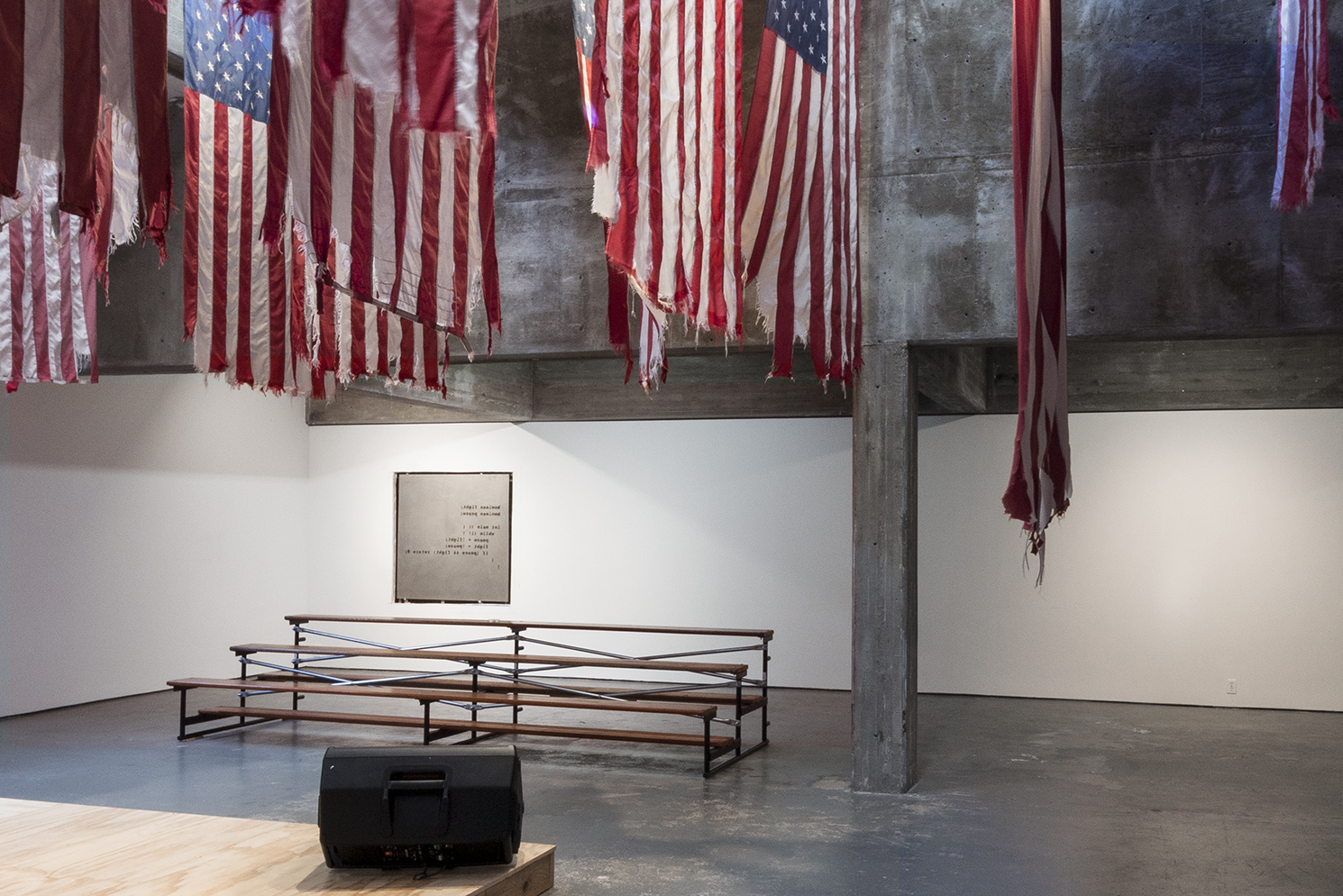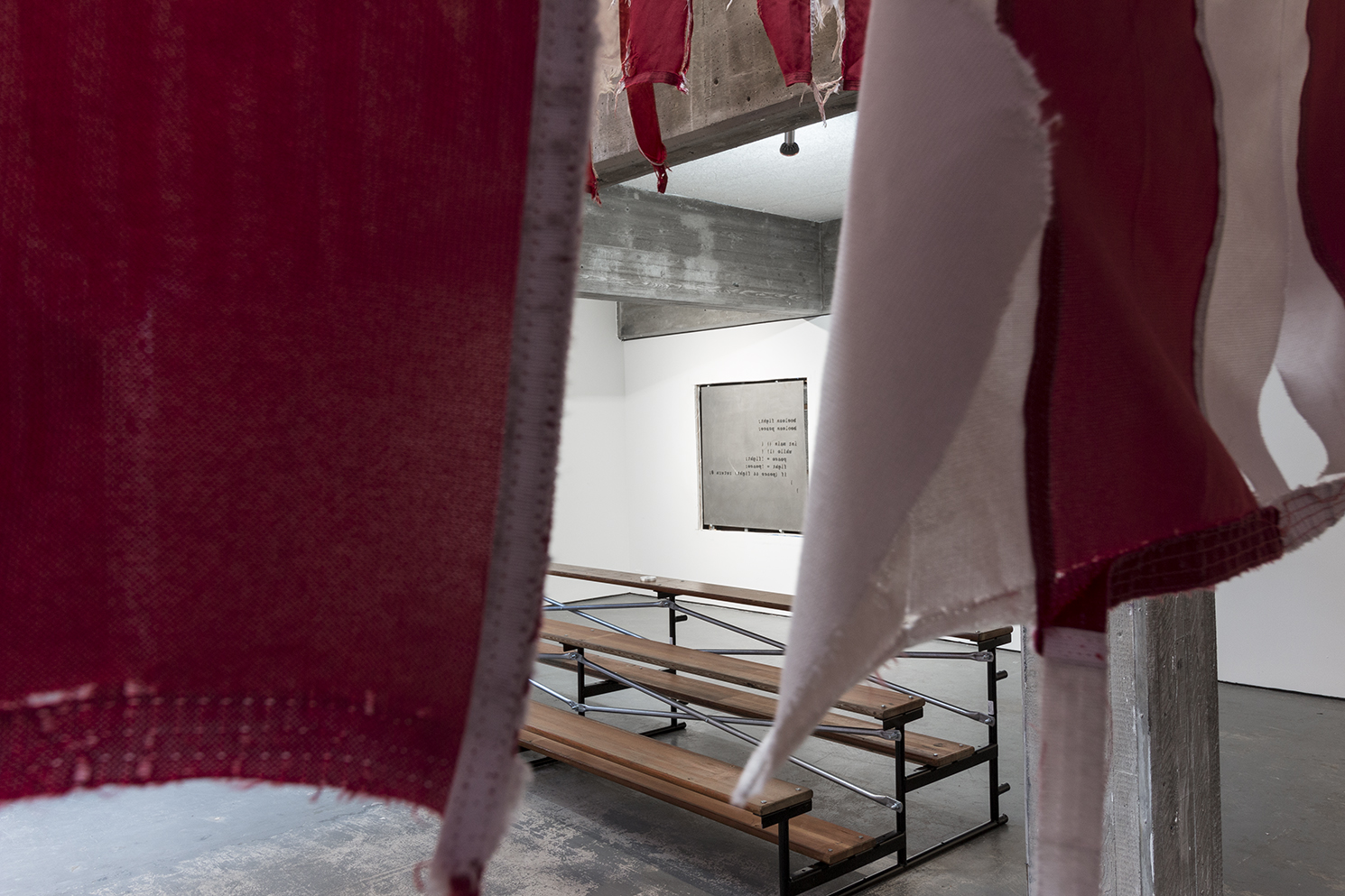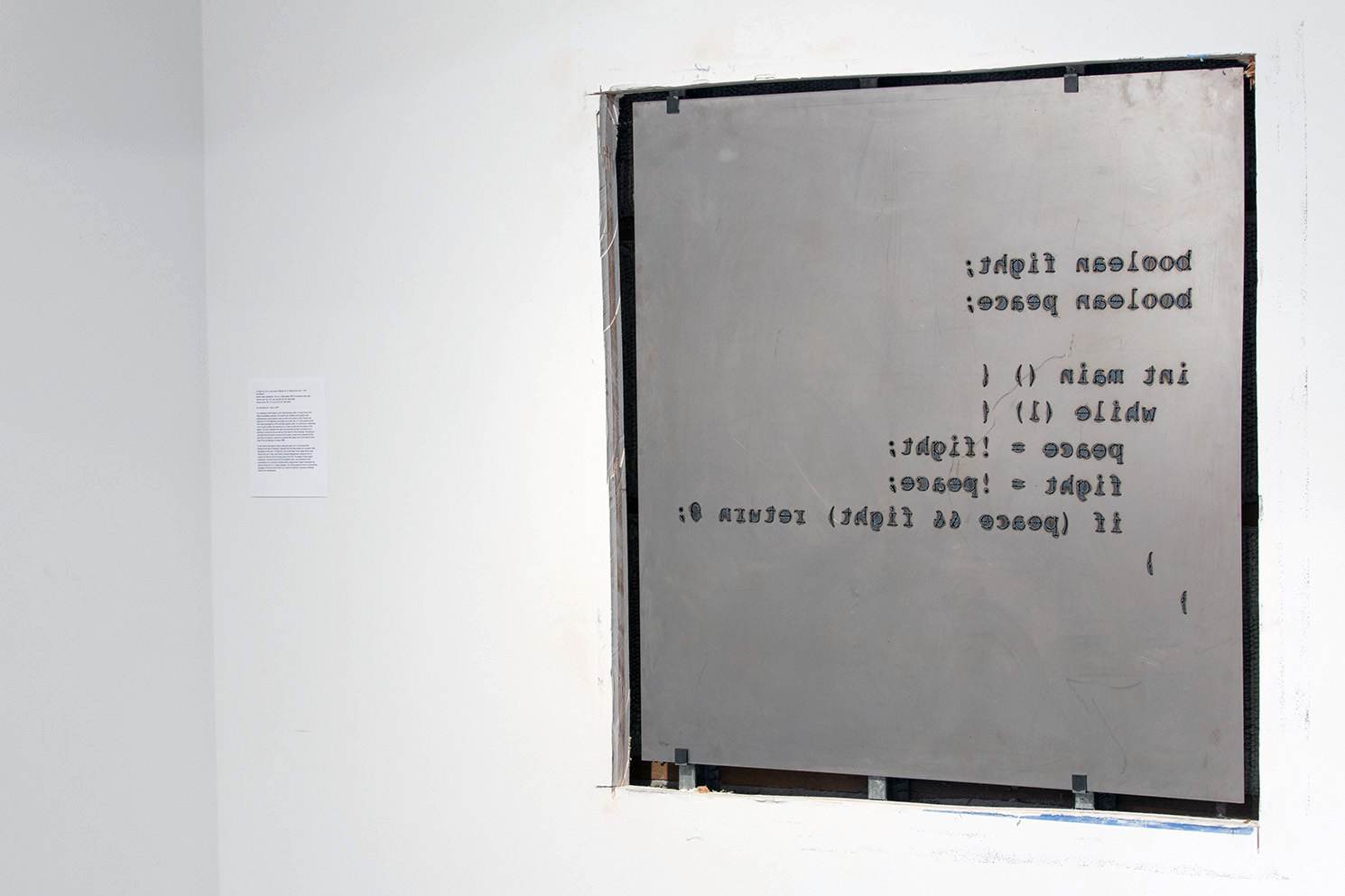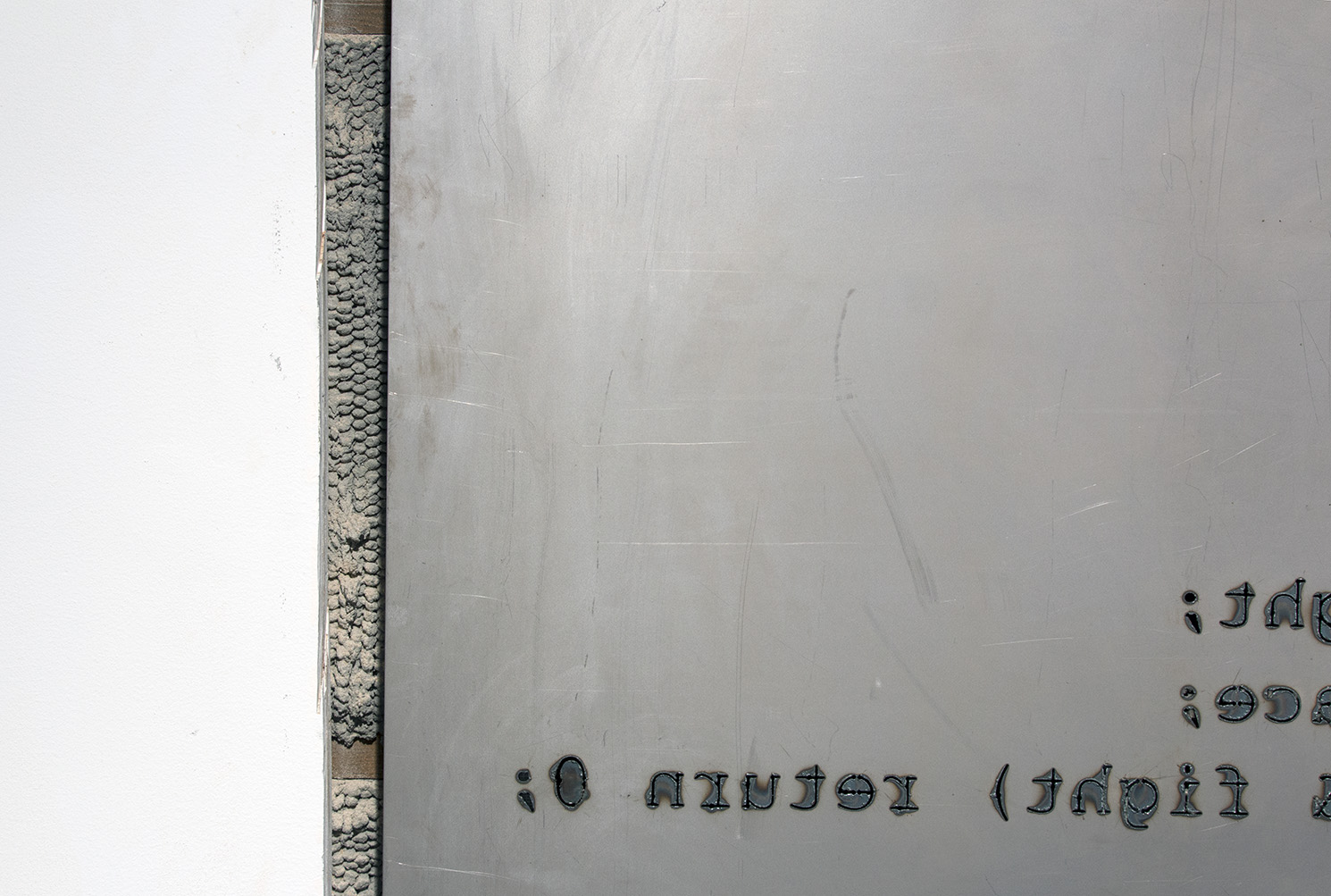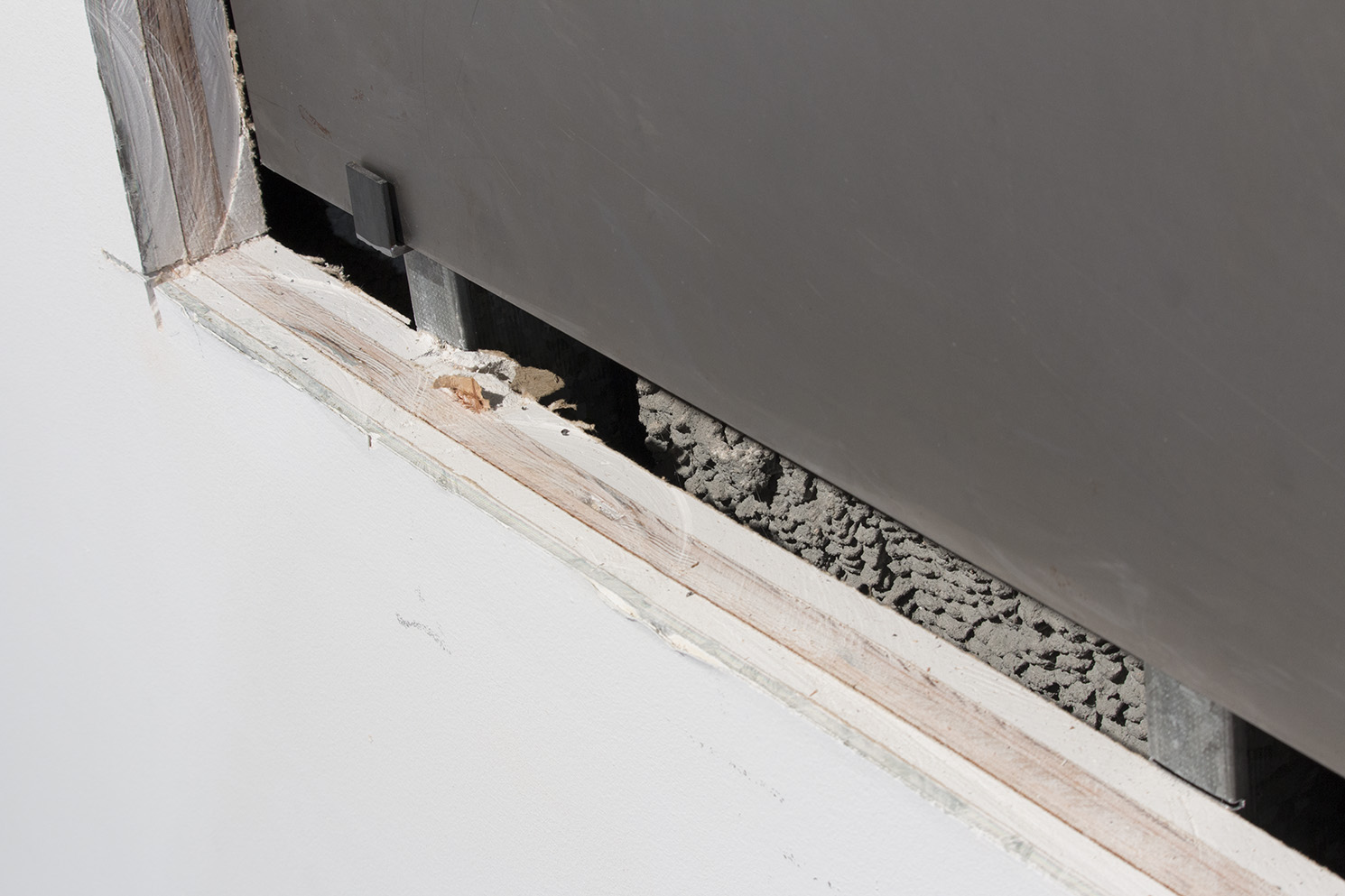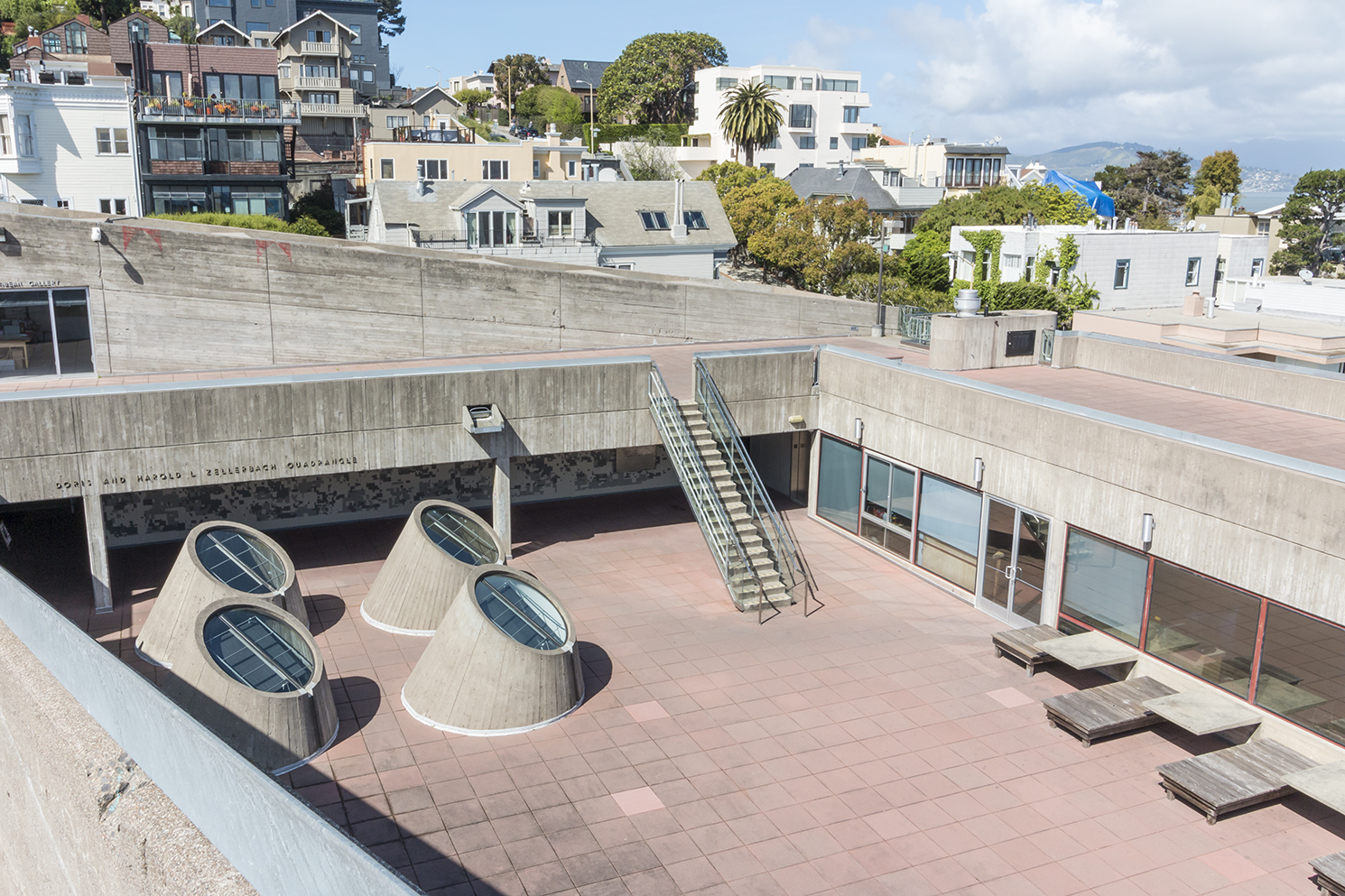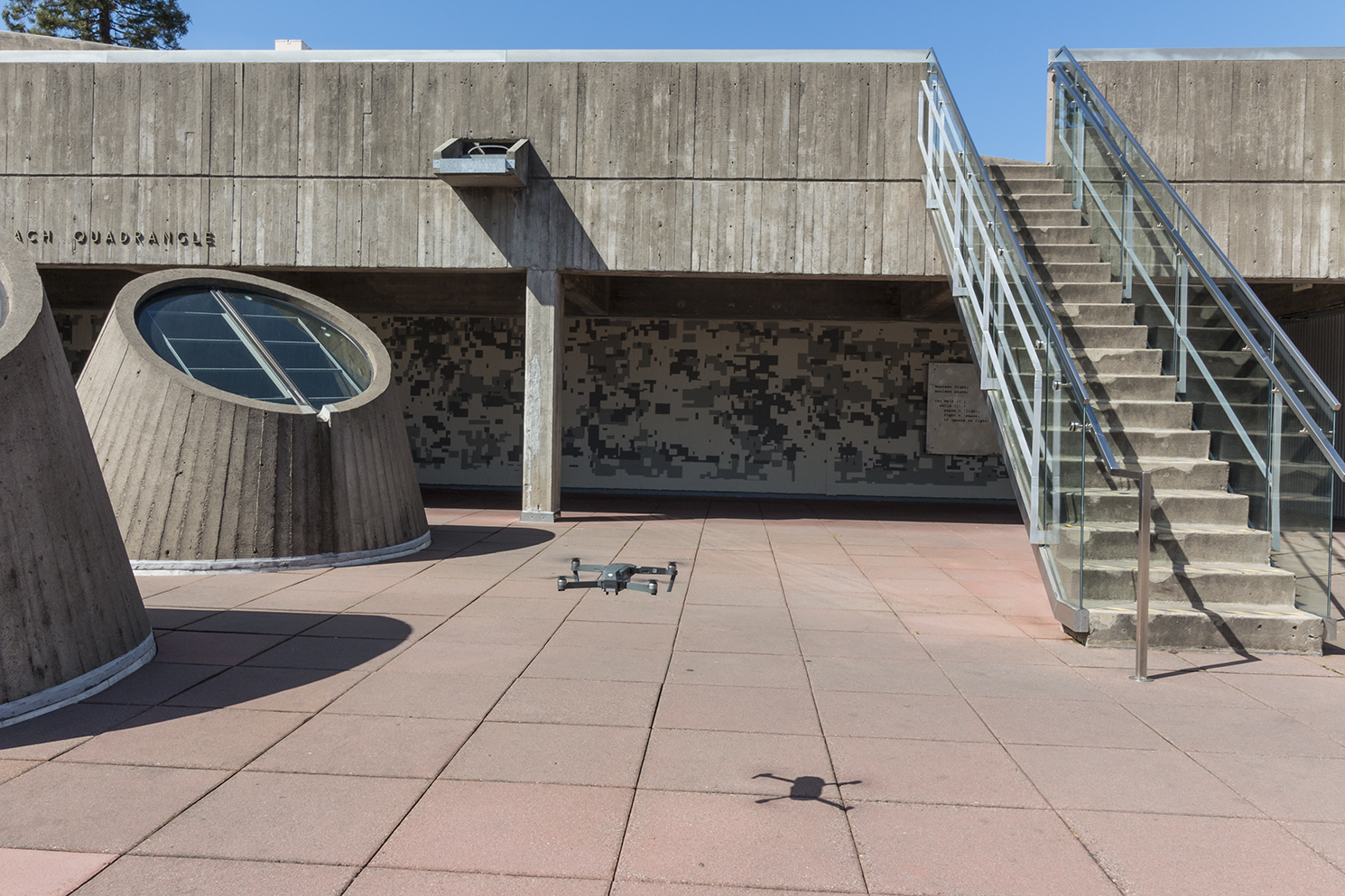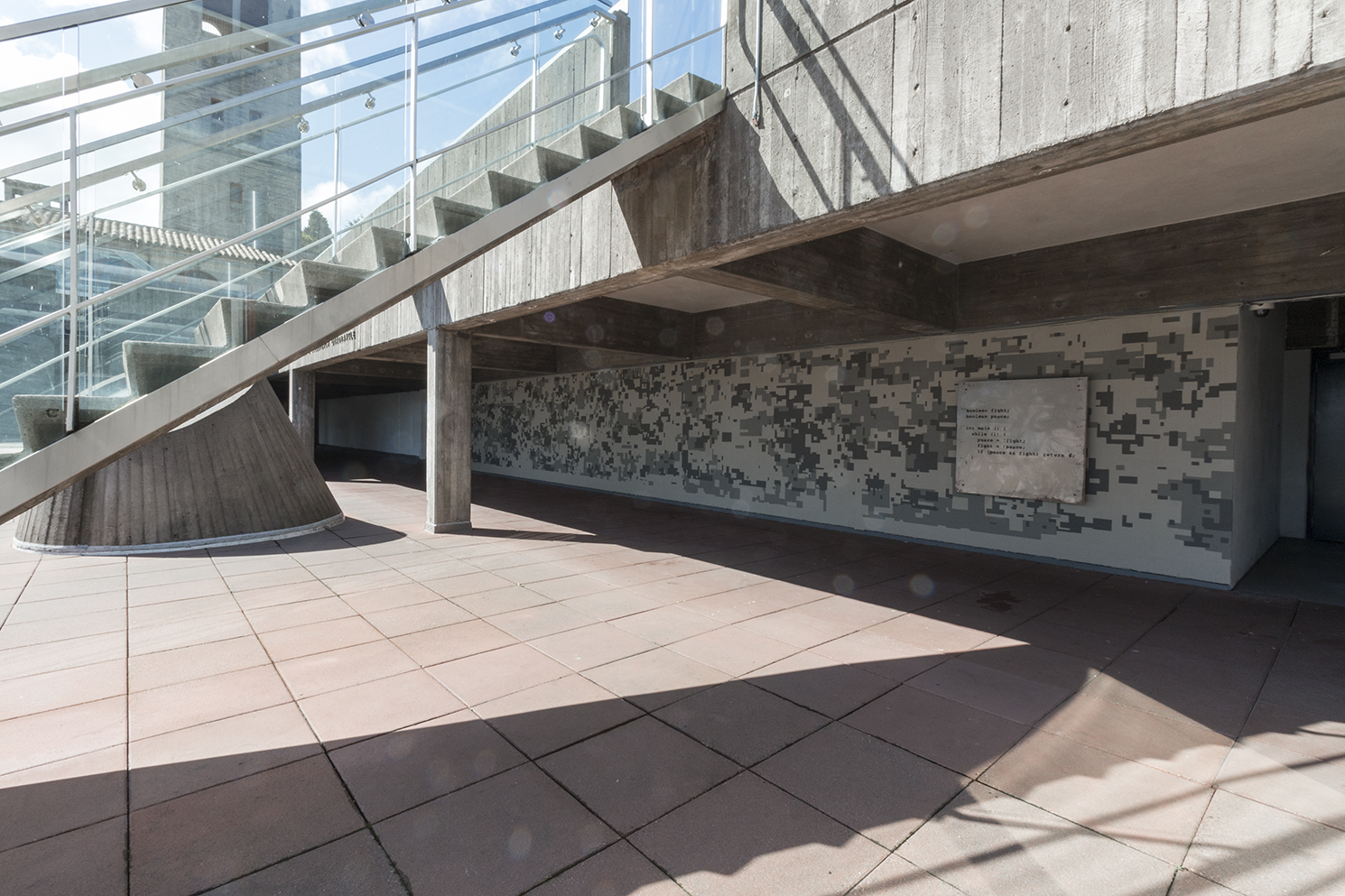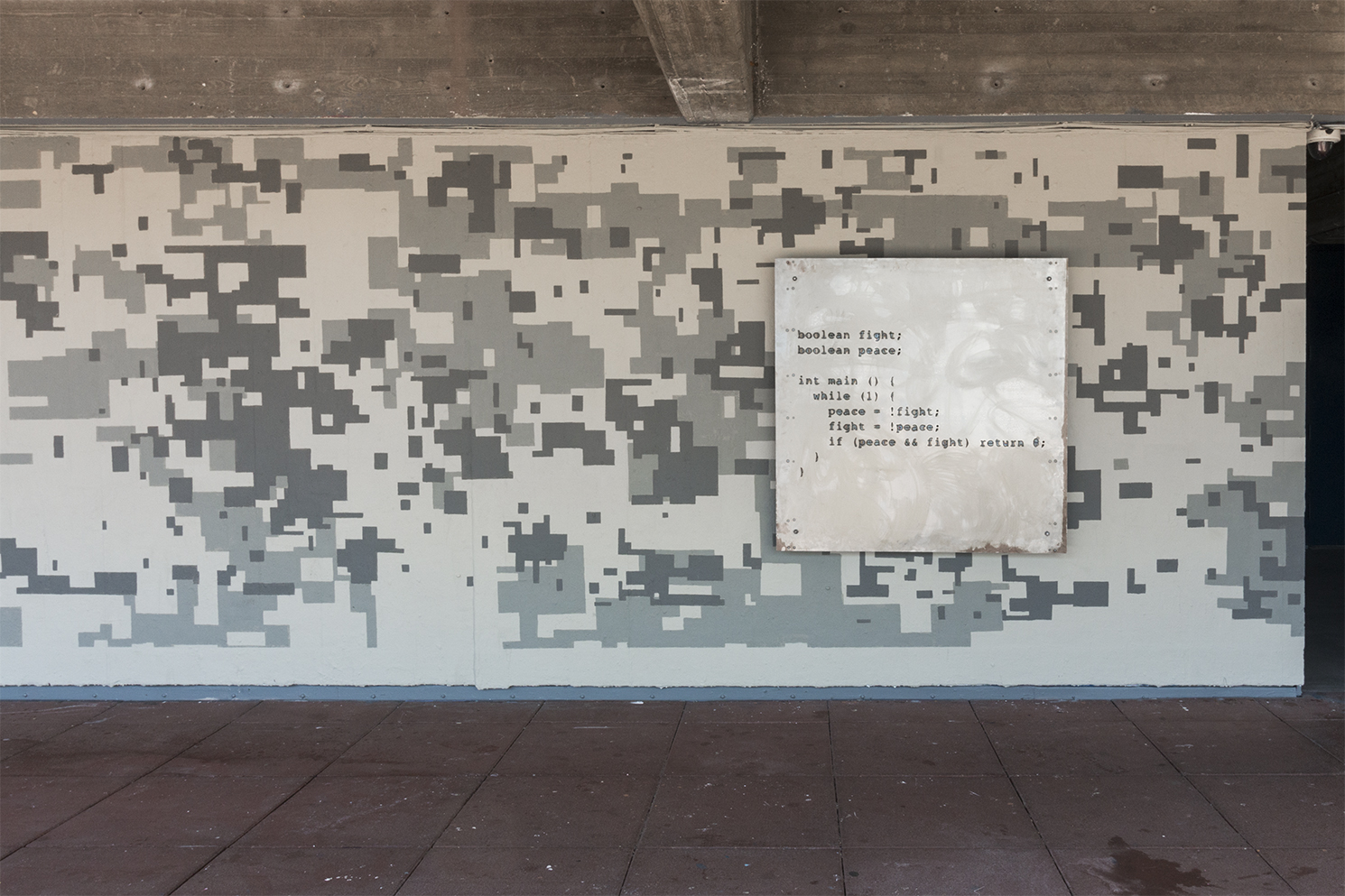“I’ll fight you just to get peace (Rapper M.I.A.”Bucky Done Gun”), 2017
Two 4 x 4’ steel plates, CNC plasma cut computer code, and paint
Interior work: 52 x 52” wall removal, 48 x 48” steel plate
Exterior work: 7.5 x 50’ mural, 52 x 52” steel plate”
As a response to Mel Ziegler’s work Flag Exchange within A Living Thing at the Walter and McBean Galleries in the San Francisco Art Institute, I have installed site-specific work addressing the internal gallery space as well as the exterior walls. Bisecting a 7.5 x 50’ digitized camouflage mural with two 4 x 4‘ steel panel carved with coding language by a CNC plasma cutter. One steel plate mounted hovering 4” away from the Gallery’s exterior wall on which a digitized camouflage pattern has been painted, whileI directly behind it inside the gallery removing a 52 x 52” piece of wall to mount the second 4x4' steel plate carved with the same code but mirrored. The project commences with the charged act of me, as the artist, physically intervening with the idea of a wall by removing a significant part of one as our administration attempts to build one along our southern border. The coding language is a digital translation of the lyric “I’ll Fight You Just to Get Peace” of female artist MIA’s song entitled “Bucky Done Gun”. Working with a programmer, this specific phrase was translated into C++ coding language to create an infinite loop. The basis of my practice is exploring the psychological space of the citizen, the solider and the country. The sense of irony I chooses to explore in this installation stems from the soldier’s experience of being potentially called by upon command to harm others for the sake of maintaining the power of one’s country.
Receiving permission to remove a 52”x52” piece of level five gallery wall all the way to the studs, began an unexpected political act. The required plastic structure to manage the dust of the project and the physical perseverance required to complete to job in almost a never-ending abyss of cloud air also reflected a continuous theme of containment in my work as the gallery. The wall revealed decades of layers of history and built up fortitude- all which posed literally more and more to cut through to get to the structural studs. The work highlights the space and examines the idea of protection as it pertains to a wall structure as well as to the interior of the individual. The process also spoke to an institution’s own boundaries of allowing a student to break down their walls, for the sake of art, to expose their interior, and the great priority to restore everything back to order.
The second phase: the act of permanently mounting or "burying" the steel plate into the wall and patching the gallery wall on top of it. This is the conceptual completion of the work which will be hidden from view as is code in a computer program. The work inside the gallery walls is to hopefully one day be rediscovered. As Hieroglyphics were once a coded language for the Egyptians, it is not a far stretch for one to think about the future interpretation of what will someday be seen as an archaic language when discovering the C++ language on the steel plate in this wall. What I believe will surpass time, is the human experience of fighting to obtain peace. Trapping this concept inside this level five wall is of significance to me because it is preserving an assumed commonality of our human condition and reflecting how we continue to require its containment whether it is armor, an identity or a gallery wall.
The third phase: The physical remnants from the interior removal will be used to construct a free standing sculpture as an extension of this work. Conceptually, it is protecting the idea of the initial installation ““I'll fight you just to get peace” and embedding this idea within a layered history. The removed gallery wall is charged with the history of its removal from the gallery, which was infused with protections from the institution. Both physically and conceptually my work embraces this idea of protection of our human experience within institution and political contexts
